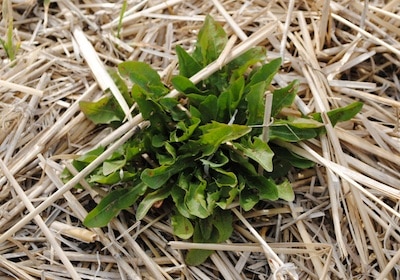For the most up-to-date article on this topic, please read the Canola Watch Fundamentals article Fall weed control.
Take these steps to control fall weeds and avoid herbicide carryover damage in fields planned for canola next spring:
Step 1: Assess fields for weed presence. If you find narrow-leaved hawk’s beard, stork’s bill, sow thistle, other tough winter annuals, or perennials like dandelion or Canada thistle, they are best sprayed this fall. You may not get good control next spring when these weeds have less leaf area to target early on, have a more established root system, and are moving energy out of (instead of into) root systems.
Step 2: Once problem weeds are identified, determine whether they are winter annuals or perennials and likely to be still present next spring. If they are, then you should spray. If they are mainly annuals and significant further seed set is unlikely before freeze up, leaving them untreated to die through the winter is probably the most economical choice.
Step 3: If you decide to spray, the list of fall-applied products is fairly short for fields that will be in canola next year. (See the Further Reading link below.) Glyphosate is one choice but there are a few others. Talk to your retailer or agronomist about the best products for specific target weeds and their sizes, and be sure to specify that you intend to seed canola on those acres next year.
Step 4: Warmer temperatures and bright sunshine improve herbicide activity. Apply glyphosate and other systemic herbicides during the heat of day when perennial weeds are actively growing and putting energy into their roots.
Step 5: Before spraying, make sure weeds are actively growing with new supple leaf area to target. Weeds cut off at harvest need time to accumulate new leaf tissues that will act as suitable surfaces for absorption of herbicides applied post-harvest. Even with the recommended to wait for 4 to 6 weeks of regrowth, leaf surface area is still only a fraction of what it was prior to harvest. Therefore glyphosate rates may need to increase by 2 to 3 times to get the same concentration of glyphosate in the plant. If frost is predicted or has occurred, avoid application until leaf condition of the target weeds can be evaluated.

